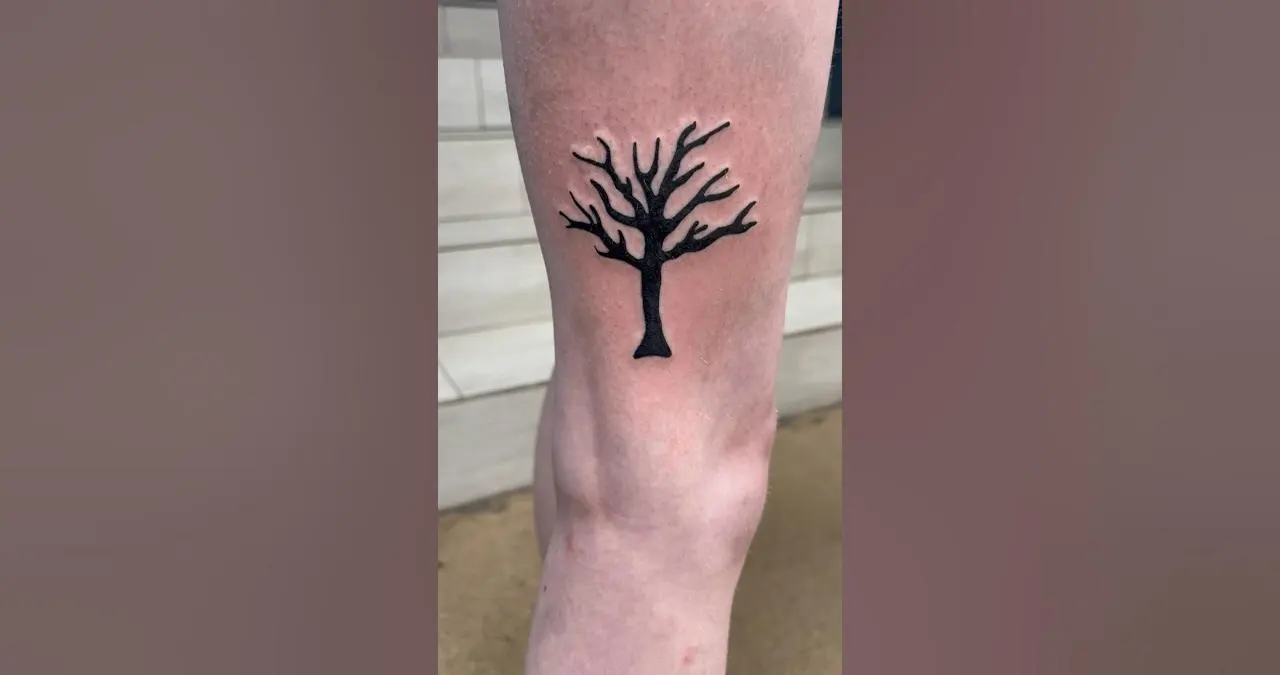Ed Hardy is more than just a fashion brand – it’s a cultural icon blending tattoo art with clothing. Explore its rise, influence, controversies, and current revival in fashion.
The Birth of Ed Hardy: How It All Started
If you’ve ever spotted someone rocking a loud, ink-inspired T-shirt with roaring tigers or skulls, chances are you just saw a piece from the Ed Hardy collection. The brand, known for its fearless artwork and rebellious aesthetic, has a story that’s as edgy as its clothes. But before it became a household name in pop culture, it all started with one man: Don Ed Hardy.
Don Ed Hardy was a tattoo artist long before he was a fashion icon. A California native and graduate of the San Francisco Art Institute, Hardy took tattooing to a new level. He didn’t see it as some backroom service, but as an art form. Inspired by Japanese tattoo masters and American ink traditions, Hardy infused a unique visual style into every piece he created. This visionary approach made him one of the most respected names in tattoo culture.
Fast forward to the early 2000s, and French designer Christian Audigier saw gold in Hardy’s art. Audigier had already made waves with Von Dutch, another bold streetwear label, but with Ed Hardy, he wanted to bring tattoo culture to the fashion mainstream. And boy, did he succeed. With Hardy’s blessing, Audigier transformed the tattoo art into wearable pieces that caught fire with celebrities and trendsetters.
Tattoo Meets Textile: Ed Hardy’s Signature Style
So what exactly made Ed Hardy stand out in the crowded fashion scene? It was the unapologetically graphic designs. Think snarling tigers, skulls with roses, koi fish, daggers, and dragons all decked out in a kaleidoscope of colors. It wasn’t minimal or sleek; it was loud, emotional, and downright addictive.
Hardy’s designs reflected the tattoo world’s deep symbolism. Every element in his artwork had meaning. The koi represented perseverance, the tiger symbolized strength, and the skull spoke of mortality and rebellion. When printed onto tees, hoodies, caps, and jeans, these designs gave the wearer a sense of individuality and raw edge. It was fashion with a story — and attitude.
The brand also embraced high-quality techniques, like rhinestone detailing, foil prints, and embroidery. These extra touches gave Ed Hardy apparel that glossy, luxe feel while still staying gritty and street. It walked the line between premium and punk, and that’s what made it addictive to a generation.
The Rise to Fame: Ed Hardy as a Pop Culture Phenomenon
By the mid-2000s, Ed Hardy was everywhere. It wasn’t just about fashion – it was a lifestyle. You could spot an this piece on everyone from Paris Hilton to Lil Wayne, from club kids to suburban teens. If you were into flashy, rockstar fashion, it was your uniform.
The brand’s aggressive marketing helped, too. Audigier was a genius at brand placement. He got celebrities to wear it gear in music videos, red carpets, reality shows, and clubs. From The Jersey Shore to Hollywood parties, it was hard to miss that signature it splash. The brand practically became a visual shorthand for living loud and fast.
But it wasn’t just about clothes. This brand expanded into fragrances, accessories, footwear, and even energy drinks. Everything was infused with the same tattoo-art vibe, making the label a full-fledged lifestyle empire. And for a time, it worked. People couldn’t get enough.
The Downfall: When Too Much Ed Hardy Was a Bad Thing

Of course, no trend stays on top forever. After dominating the scene for years, Ed Hardy hit a serious backlash. The main critique? Overexposure.
The brand became a victim of its own success. With too many spin-offs, copycats, and low-quality counterfeits flooding the market, it lost its edge. The exclusive tattoo aesthetic became watered down. People started to associate the brand with try-hard fashion and gaudy tastes. Memes and mockery followed.
And then came the infamous quote from Don it himself, saying, “I sold my name to idiots.” Though there’s nuance to that statement, it reflected a growing tension between Hardy and Audigier over the brand’s direction. Hardy wanted to keep the integrity of tattoo art; Audigier wanted to sell as much as possible. That disconnect contributed to the fall from grace.
The Revival: How Ed Hardy is Making a Comeback
You can’t keep a bold idea down for long. In recent years, it has seen a lowkey revival. Thanks to Gen Z’s love for Y2K and nostalgic fashion, the brand is being rediscovered by a whole new audience.
The current it is more refined, but still true to its roots. Collaborations with cool, underground brands have helped reintroduce the label in a more curated, less flashy way. Think vintage this tees styled with cargo pants, layered with neutral tones — still edgy, but less in-your-face.
Fashion cycles are funny like that. What was once cringe is now cool again. Ed Hardy, with its bold visuals and rebellious DNA, fits right into a culture that loves authenticity, storytelling, and standing out.
What Ed Hardy Represents Today
Beyond just being a fashion label, this represents freedom. It’s about breaking norms, embracing individuality, and celebrating personal expression. In a world of fast fashion and generic styles,it still dares to be different.
That’s why so many are coming back to it. Whether you wore in this heyday or you’re discovering it for the first time, the message remains the same: be bold, be real, be unapologetically you.
Fashion might change, but the desire to stand out never goes out of style. And Ed Hardy has always had the guts to make that statement, loud and proud.
Ed Hardy in Streetwear Culture
Streetwear has always been about more than just clothing. It’s about statements. And it has been right there in the conversation with brands like Supreme, BAPE, and Off-White. It brings something different to the table: an artistry rooted in real ink and skin.
While many streetwear brands focus on logos and limited drops, it brings history and handcrafted visuals to its pieces. That authenticity makes it stand apart. Tattoo art is deeply personal, and Ed Hardy’s designs reflect that spirit. Wearing it isn’t just about flexing; it’s about telling your story without saying a word.
These days, you’ll even find fashion influencers mixing it with high-end pieces — proving that the brand has matured, yet stayed true to its roots.
Ed Hardy and Celebrity Culture

Celebrity endorsements helped build the Ed Hardy brand in the early days, but that relationship has evolved. Back then, celebs wore this because it was trendy. Now, they wear it because it’s vintage, edgy, and iconic.
A new crop of stars, from musicians to models, is rocking retro Ed Hardy gear in shoots and music videos. It’s not just fashion; it’s a callback to a different era — one that feels refreshingly real in a world full of filters and polished branding.
And let’s face it: nothing says “I don’t care what you think” like a full-print it hoodie. It takes confidence, and celebrities know how to use that energy to their advantage.
The Legacy of Don Ed Hardy
It’s impossible to talk about the brand without giving proper respect to Don it himself. Before the fashion empire, he was a pioneer of modern tattooing in America. He brought global techniques into his work, elevating tattooing to a fine art.
Even now, Hardy is more interested in the art than the fame. Though his name is known worldwide, his commitment to craft and tradition remains solid. His impact on both tattooing and fashion will never be forgotten.
Don it gave the world a new way to look at tattoos. And through his collaboration with fashion, he made body art accessible to everyone, no ink needed.
FAQs
What is Ed Hardy known for?
Ed Hardy is known for blending traditional tattoo art with streetwear fashion. The brand’s bold graphics, inspired by Don Ed Hardy’s tattoo designs, made it a pop culture icon in the 2000s.
Who started the Ed Hardy brand?
Tattoo artist Don Ed Hardy created the art, but the fashion brand was launched by Christian Audigier, who licensed Hardy’s artwork for clothing and accessories.
Why did Ed Hardy become unpopular?
The brand became overexposed and was heavily counterfeited, leading to a decline in quality and exclusivity. It also got mocked for being gaudy and excessive.
Is Ed Hardy still in style?
Yes, Ed Hardy is making a comeback thanks to Gen Z and the Y2K revival trend. Vintage pieces are especially popular, and modern collaborations are giving the brand a new edge.
What makes Ed Hardy unique?
Its fusion of authentic tattoo art with fashion makes it stand out. The designs are meaningful, bold, and rooted in real cultural expression.
Where can I buy Ed Hardy today?
You can find Ed Hardy pieces on their official website, in select fashion stores, or through vintage and resale platforms like Grailed or Depop.
Conclusion: The Eternal Ink of Ed Hardy
Ed Hardy isn’t just a brand; it’s a movement. It’s art, rebellion, and identity stitched into every seam. Whether you’re rocking it for nostalgia or making it part of your modern wardrobe, the legacy of Ed Hardy lives on. It’s more than fashion — it’s expression in its rawest, loudest, and most unapologetic form.
So go ahead. Wear it loud. Wear it proud.




